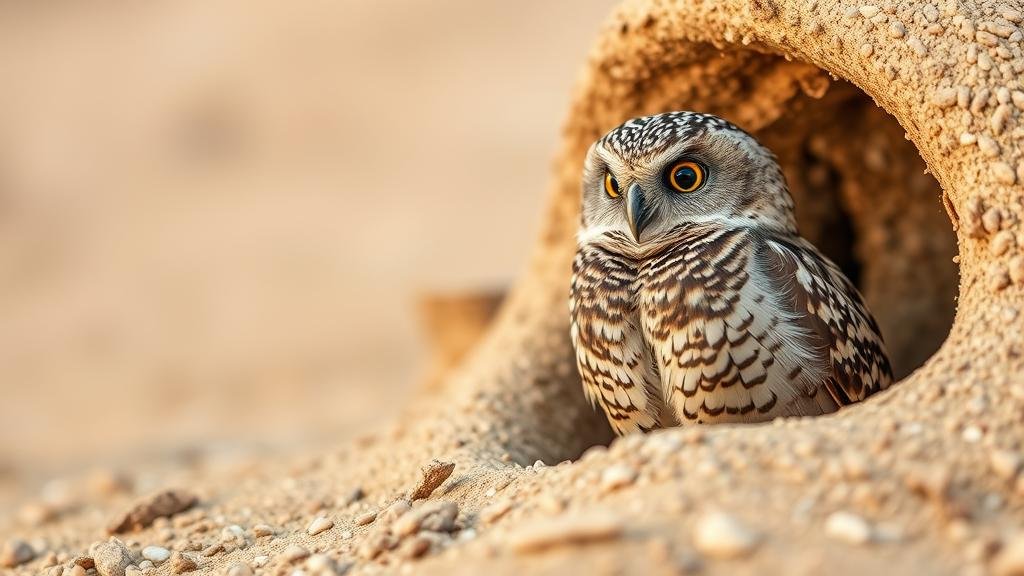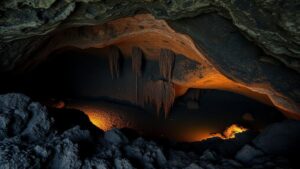Documenting the hidden world of burrowing owls in arid desert regions.
Documenting the Hidden World of Burrowing Owls in Arid Desert Regions
Burrowing owls (Athene cunicularia) are unique avian inhabitants of arid and semi-arid regions throughout the Americas. Unlike typical owls that prefer trees or other elevated structures, these small owls make their homes underground, often in abandoned burrows created by other animals. This fascinating behavior, coupled with their endangered status in various locations, has ignited interest among researchers and conservationists alike. This article explores the habitat, behavior, and conservation efforts surrounding burrowing owls in desert environments.
Habitat of Burrowing Owls
Burrowing owls are predominantly found in open landscapes, particularly in the following habitats:
- Grasslands
- Scrublands
- Deserts
In the western United States, particularly in the states of California, Arizona, and New Mexico, burrowing owls thrive in arid desert regions. Their adaptations allow them to endure extreme temperature fluctuations, from sweltering days to chilly nights. They usually inhabit areas with well-drained soils where burrowing mammals like prairie dogs or ground squirrels can be found.
The Ecology of Burrowing Owls
Burrowing owls are small, measuring approximately 9 to 11 inches in height, with a wingspan of about 21 to 24 inches. possess distinct long legs and a compact body, which facilitate their ground-dwelling lifestyle. One of the notable features of these owls is their behavior of exhibiting a head bob–a side-to-side movement that helps them gauge their surroundings more effectively.
These owls are primarily insectivorous, feeding on a diet that includes:
- Insects (grasshoppers, beetles)
- Small mammals (mice, voles)
- Reptiles (lizards)
They are also known to forage during both day and night, which is relatively unusual for owls and underscores their adaptability.
Breeding and Nesting Behavior
Burrowing owls exhibit intriguing nesting behaviors. Mating usually occurs between late March and early June, leading to a clutch of 6 to 12 eggs. female incubates the eggs for about 28 to 30 days while the male brings food. The young owls fledge approximately 6 weeks after hatching but often remain near the burrow for additional weeks, learning essential survival skills.
A study conducted in 2021 in the Sonoran Desert revealed that burrowing owls often exhibit a phenomenon called commensal nesting, where other species, such as rabbits, coexist with them in or around the burrow, providing additional protection and food opportunities.
Threats and Conservation Efforts
Despite their adaptability, burrowing owls face numerous threats, including habitat loss, urban development, and pesticide use. According to the U.S. Fish and Wildlife Service, populations of burrowing owls in some areas have declined by as much as 50% over the past few decades.
Conservation initiatives are crucial for their survival. Organizations like the Burrowing Owl Conservation Network have implemented various strategies, such as:
- Public education campaigns to raise awareness about burrowing owls
- Habitat restoration projects in degraded landscapes
- Monitoring populations through citizen science initiatives
In 2022, the city of San Diego launched a program to protect burrowing owl habitats affected by urbanization. This includes setting aside land as protected areas and engaging local residents in monitoring owl activity.
Real-World Applications of Research
Research on burrowing owls not only enhances our understanding of this species but also contributes significantly to broader ecological studies. For example, their dependency on prairie dog colonies as a food source makes them indicators of prairie ecosystem health. Protecting these owls can lead to enhanced conservation efforts for other fauna and flora sharing their habitat.
Conclusion
Burrowing owls represent a unique facet of arid desert ecosystems, and understanding their ecology, behavior, and conservation needs is essential for their protection. With ongoing research and community involvement, it is possible to ensure that these fascinating creatures continue to thrive in their natural habitats. Conservation efforts not only benefit burrowing owls but also promote biodiversity and ecological health in desert regions, making them vital players in the environmental landscape. Protecting their habitats and raising awareness are actionable steps everyone can take to contribute to their survival.


